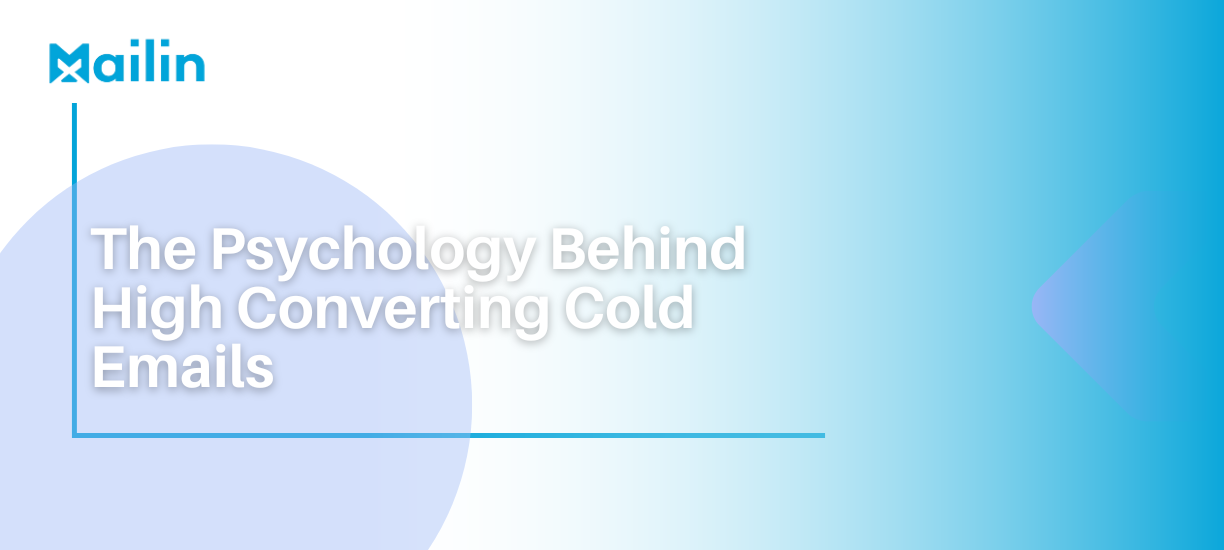The Psychology Behind High-Converting Cold Emails
Some cold emails get instant replies. Others are ignored or deleted without a second thought. The difference often comes down to psychology—understanding how people think, what grabs their attention, and what motivates them to respond.
High converting cold emails aren’t just about deliverability or sending more volume. They’re about connecting with recipients in a way that feels personal, relevant, and worth their time. Below, we break down the psychological principles behind successful emails, with real-world examples and actionable advice.
First Impressions Matter
The subject line and preview text are your first—and sometimes only—chance to engage someone. They create an emotional reaction before the email is even opened.
Subject lines that spark curiosity, feel personal, or clearly state value tend to perform better. For example:
- “Quick idea for Tom”
- “Noticed your Q4 goals—here’s something that could help”
These invite interest because they feel written for the recipient.
In contrast, vague or overused lines like “Boost your pipeline today” or “Re: Your Business” tend to be ignored. Even “Quick idea for {FirstName}” is becoming stale.
Try new angles—ask a question, reference a recent event, or share an unexpected insight. Examples:
- “Is this on your radar yet?”
- “What most teams miss before Q4 closes”
In one Instantly campaign, a curiosity-driven subject line boosted reply rates from 1.2% to over 4%—a small change with a big impact.
People Scan, Not Read
Most recipients decide within seconds whether your email is worth reading. That’s why structure and readability are critical.
Good emails use short sentences, clear sections, and white space. Avoid long paragraphs, jargon-heavy language, or generic introductions.
Example:
Bad:
“At {Company}, we leverage cutting-edge solutions to help organizations like yours optimize processes, drive ROI, and scale seamlessly. I’d love to schedule a call to discuss more.”
Better:
“Saw you’re expanding your sales team. We helped {Competitor} cut ramp time by 27% last quarter. Would you be open to hearing how?”
The second version works because it’s specific, scannable, and clearly valuable.
Personalization Triggers Connection
People engage more when the message feels tailored to them. Go beyond just using their name—reference a recent promotion, funding round, product launch, or even a comment they shared online.
Example:
“Congratulations on your new VP role. Are you thinking about ways to accelerate onboarding? We helped {Known Brand} cut ramp time by 27% last quarter—happy to share more if helpful.”
Adding this kind of meaningful personalization improved reply rates from 1.2% to 4% in one campaign—nearly quadrupling engagement.
Social Proof Builds Trust
Cold emails fail when recipients don’t trust the sender. Establish credibility early by referencing well-known clients, measurable results, or media coverage.
Example:
“We’ve worked with teams at Stripe and Notion to solve this exact problem. Let me know if it’s worth sharing how we did it.”
When readers recognize brands you’ve helped, they’re more likely to listen.
Make It Easy to Say Yes
The goal of your first cold email isn’t to close—it’s to start a conversation. One clear, low-pressure question often performs better than asking for a long meeting.
Instead of pushing a demo, try:
- “Would you be open to learning more?”
- “Does this sound relevant to what you’re working on?”
In one campaign, replacing “Schedule a 45 minute demo” with a simple ask improved reply rates from 0.5% to 3%.
Emotions Drive Action
Urgency, relevance, and FOMO (fear of missing out) are emotional triggers—but subtlety is key.
Use light emotional tension by referencing what they might miss or connecting your message to a timely issue.
Examples:
- “With Q4 hiring closing soon, now is the perfect time to optimize onboarding.”
- “You might be overlooking a simple way to cut customer churn by 20%.”
These statements motivate without manipulation.
Timing and Relevance Matter
Even a perfectly written email can flop if sent at the wrong time. Align outreach with moments when prospects are most likely to engage—such as job changes, funding rounds, or product launches.
One campaign targeting newly promoted SaaS execs timed outreach within their first 30 days—and reply rates jumped from under 1% to 4.5%.
Real Campaign Examples: What Worked and What Didn’t
Good Campaign – 4.9% Reply Rate
This campaign succeeded by applying psychological principles: a strong subject line tied to a company milestone, concise structure, credibility, and a soft CTA.
What worked:
- Creative, relevant subject line
- Short, scannable body text
- Personalization beyond just {FirstName}
- Social proof with recognizable clients
- Soft, specific call-to-action
Bad Campaign – 1.2% Reply Rate
This underperformed due to a generic subject line, long cluttered copy, no personalization, and a hard CTA.
How it could be improved:
- Use a more specific and timely subject line
- Break content into shorter sentences with more spacing
- Add credibility with client success stories
- Replace hard CTA with a softer ask
Final Takeaway
Cold emailing isn’t just about landing in the inbox—it’s about delivering a message that feels personal, timely, and relevant to a real person.
Understand your audience’s psychology, simplify your format, lead with trust, and write like a human. If your campaigns aren’t performing, revisit your subject lines, reduce friction in your CTAs, and personalize more meaningfully. Even small changes—done thoughtfully—can produce major gains in reply rates and engagement.



 Back
Back